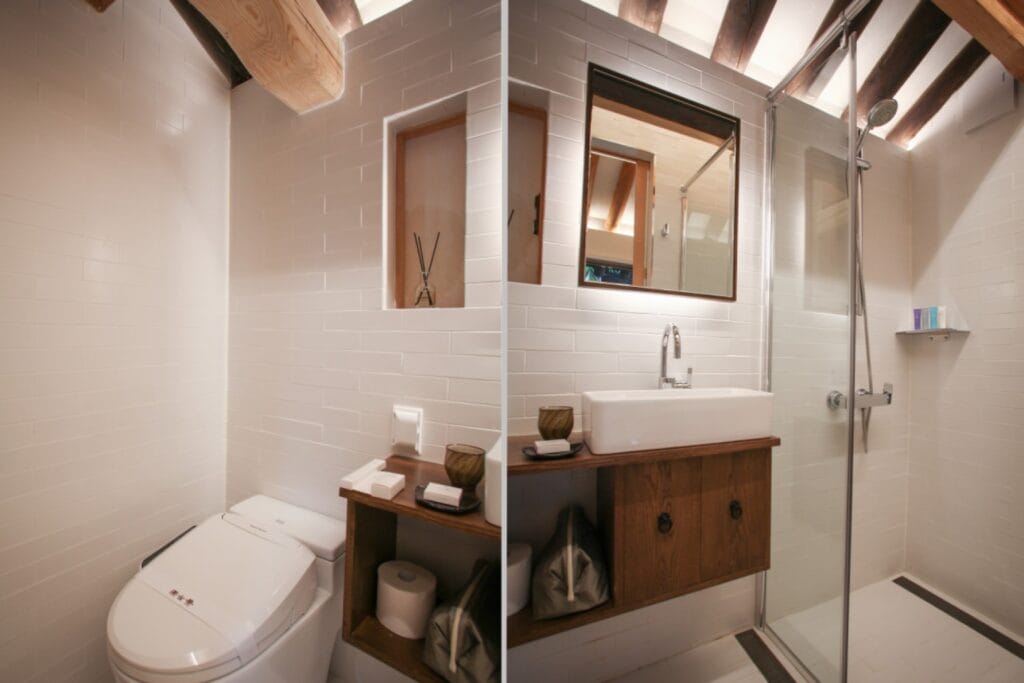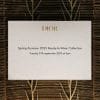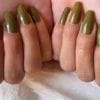In the heart of Seoul sits a small cluster of traditional Korean houses seemingly frozen in time. Here you’ll find Rakkojae Seoul Bukchon Hanok Village, where tradition meets luxury.
By Andrea Wong.

Rakkojae Seoul
If you have ever watched a sageuk, which is a Korean historical drama (think Kingdom, but less zombies), you would be familiar with the hanok. The traditional Korean house is an elegant structure that dates back to the 14th century during the Joseon Dynasty.
Usually characterised by a tiled roof, the hanok harks back to a simpler, calmer existence, highlighting the Korean people’s great respect for nature with construction materials made completely out of natural elements—earth, wood and stone. Clay is used for the roof, walls and floors, wood makes up the framework of beams and pillars, and stone establishes the foundation.

Rakkojae Seoul
More than just a house to eat and sleep in, the hanok is a place where its inhabitants can find themselves in harmony with nature. Its design brings the natural world inside, with a strong visual and physical connection between the interior and the outdoors, making it a forerunner to biophilic design.
The classic charm of these historical homes has attracted tourists in search of an authentic cultural experience, with modest hanok homestays gaining in popularity. But what about discerning travellers looking to experience the quiet dignity and tranquillity of a hanok without sacrificing their creature comforts? Enter Rakkojae.

Patio room
Within the hilly neighbourhood of Bukchon Hanok Village, a 600-year-old residential quarter that once housed high-ranking officials and nobility during the Joseon Dynasty, lies a trio of buildings among the 900-odd hanoks there. They make up Rakkojae Seoul Bukchon Hanok Village.
Inspired by the albergo diffuso model originating from Italy, where a network of accommodations is spread across the span of an entire town, Rakkojae is pioneering this concept in Korea with its hotels located in different parts of the village. Instead of a typical hotel that connects guestrooms vertically via elevator, here the alleyways become elevators and the individual hanoks become guestrooms. This leads to a true community spirit and offers visitors an intimate insight into the local lifestyle.

Patio Room interior
The Rakkojae hanoks in Bukchon Hanok Village that are part of the dispersed hotel concept are Rakkojae Seoul Main Hanok and Bukchon Binkwan by Rakkojae, which constitute the lodgings, and the Rakkojae Culture Lounge, which functions as the sarangbang, traditionally the reception room that aristocrats in the Joseon Dynasty used to greet guests in.
The 140-year-old Main Hanok was restored by renowned master carpenter Young Jin Chung, recognised as a Korean National Treasure, in 2003. As you enter through the wooden main gate, a curved stone path takes you past a small collection of earthenware jars typically filled with kimchi and soybean paste, leading you to a garden courtyard of bamboo and pine trees. Traditional rubber shoes line the terrace steps leading to each of the hanok’s five rooms, all with views of the garden. On top of a lotus pond sits the most popular room, the Patio Room, where you can easily picture ancient scholars enjoying the scenery. Nature is embraced here, and it permeates into practically every crevice of the space, creating an idyllic setting where time seems to stand still.

Rakkojae Seoul Main Hanok
Just a short walk from the Main Hanok lies Bukchon Binkwan, opened in March of this year. Launched in partnership with the Seoul Metropolitan Government, this is Seoul’s first meditation-themed hanok hotel. The hilltop hanok, presumed to have been built in the 1930s, was painstakingly renovated over two years to create an urban sanctum that boasts the most pristine views in Bukchon Hanok Village. There are five sun-drenched guestrooms that have been carefully designed to reflect the natural beauty of its surroundings and a refreshing empty courtyard that offers panoramic views of old and new Seoul. It is the perfect anxiety-free environment to bring the mind to peace.

Rakkojae Seoul entrance
Rakkojae has masterfully elevated the hanok stay by achieving a harmonious balance between infusing contemporary comforts into the property and maintaining the cultural integrity of the hanok. The first hanok hotel to be listed in the inaugural Michelin Guide in Seoul in 2017, Rakkojae takes great care to deliver a 5-star hotel experience.

Welcome tea
Upon arrival, guests will be welcomed with tea and local confectionaries, a soothing ritual that can be enjoyed in the comforts of their room and can bring a sense of calm after a hectic travel journey. Breakfast is included, and guests can choose between a hearty Korean breakfast or a Western-styled alternative. The Korean option will offer a more holistic experience.

Breakfast
Every guestroom across the Rakkojae properties comes complete with all the amenities that you would expect from a luxury hotel, including a private modern bathroom with bath products from Aromatherapy Associates, a Nespresso machine and a mini bar stocked with thoughtfully curated local items such as Shin Ramyun Cup Noodles, Honey Butter Almonds and Dohwagain Sheet Masks. The rooms are also decorated with priceless antiques representative of the time period of the hanoks. Guests can enjoy the privacy of their own rooms while resting assured that they will be taken care of by warm-hearted Korean hospitality should they need it.

Far bedroom

Bathroom
A true hidden gem of the hanok is the ondol system, an underfloor heating system which transfers heat traditionally from an outside furnace, heating the room above it. Sleeping on heated flooring has been shown to help improve blood circulation, aid sleep and improve general quality of life. Rakkojae’s signature jade flooring, with its own healing properties, helps keep the room cool in the summer and warm in the winter. The Asian practice of living close to the floor is a big part of Korean culture, and traditionally in a hanok one would sleep on thin mats. To honour this tradition but still infuse a touch of modern luxury, Rakkojae has developed its own mattress that is comfortable enough to rival a 5-star hotel’s to ensure a blissful night’s sleep.

Hanbok Experience
The Rakkojae experience does not end there. Right next to Bukchon Binkwan and directly adjacent to the most famous photo spot in Bukchon Hanok Village is Rakkojae Culture Lounge. Here, visitors can experience Korea’s proud cultural values, such as a traditional meditative Korean tea ceremony, in a space that features a melange of centuries-old antiques and works of ceramic art. Complimentary services include the yellow soil jjimjilbang sauna at the Main Hanok to banish fatigue and the hanbok experience, where guests can wear traditional Korean clothes within each hanok for the perfect Instagram moment.

Yellow Mud Dry Sauna
There has been a hanok renaissance in Korea in recent years, and Rakkojae has played a big part in that. More people are regaining interest in this simple, slow way of life as a welcome alternative to the relentless pace of city living. In pursuit of true relaxation, travellers can seek respite in Rakkojae Seoul Bukchon Hanok Village, where they can find serenity in the heart of a megapolis.

Separate House room
For more information about the Rakkojae Seoul Bukchon Hanok Village, visit here. Or, discover more fascinating facts about South Korea here.
abd. aziz draim
Currently the creative director of BAZAAR, Aziz has been helming architecture, fashion, and design magazines for two decades now, and he’s been doing it in two languages to boot. Citing Rei Kawakubo, Vivienne Westwood and Jean Paul Gaultier as his earliest fashion gurus, this amateur poet believes that nobody deserves an ugly pair of shoes.



